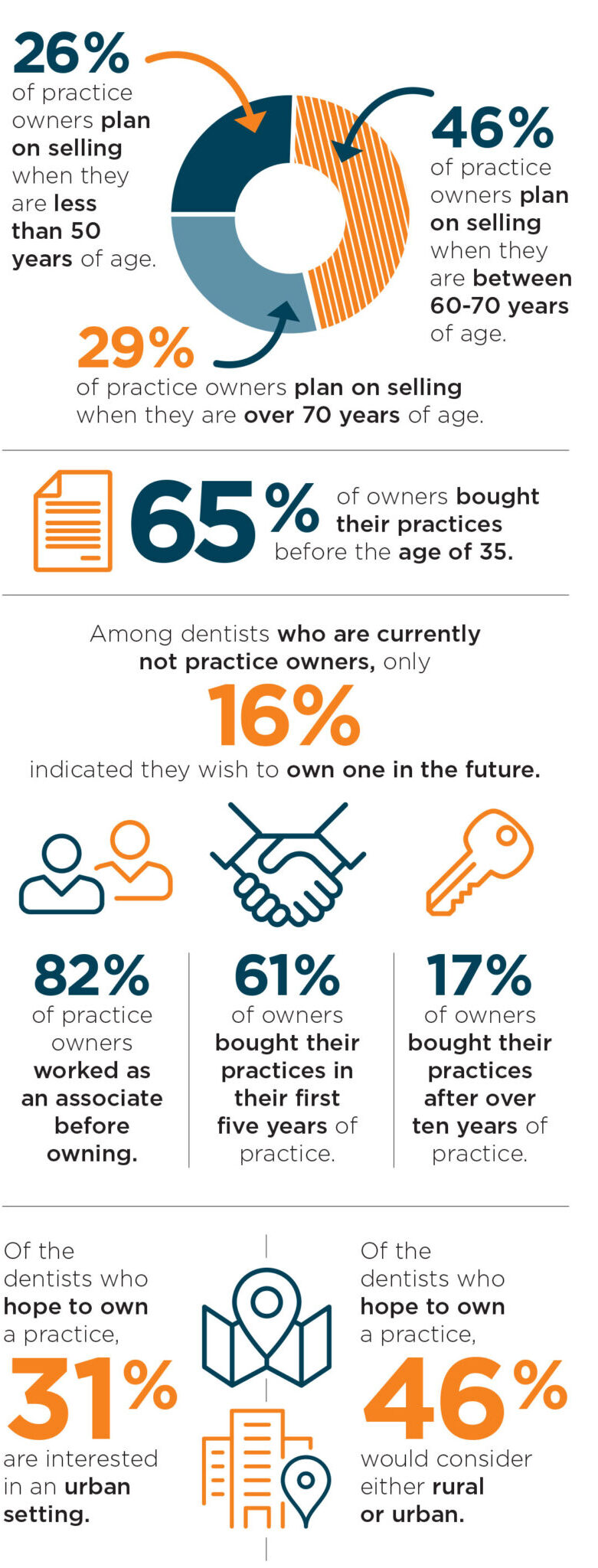
Buying your own dental practice is no small feat. Many factors must be considered, which is why having help from a broker or lawyer is extremely important. In our latest survey of practising Canadian dentists, we looked at some current trends for when dentists plan on buying or selling their practices in terms of age and experience.
Over ½ of dentists are buying their practices before the age of 35 and in their first five years of practice. It is impressive to see how many dentists are able to purchase their own practice so early in their career. But let’s not forget about the other 40-45 percent of dentists getting into ownership after the age of 35. Purchasing office space is a demanding and expensive process so don’t rush into it – even though you may feel like you should. Seek help from a financial advisor for assistance along the way to see what timeline works best for your circumstances.
When looking at the average age of selling a practice among dentists, most don’t plan to sell until they are aged 60 years or older. Just like purchasing an office space, selling one can be a time-consuming process where a specialist’s help is invaluable. Even if you don’t plan on selling or retiring for a few more years, we recommend reaching out to your practice’s legal and finance teams well in advance so you can begin preparations and ensure a smooth transition.

As seen in the print issue of Oral Health July 2024
In October and November 2023 Bramm Research, a third-party independent research house, conducted an online survey of active, practicing non-hospital affiliated dentists and dental specialists on behalf of Oral Health. Survey invitations went out to a contact list of approximately 9,000 readers and there were 265 completions, for a response rate of 2.9 With a total sample of 265, the margin of error is plus or minus 5.9 percentage points at the 95 percent confidence level. If, for example, 50% of the sample indicated that agreed with a statement, then we can be reasonably sure (19 times out of 20) of an accuracy within +/- 5.9%. This means that a total census would reveal an answer of not less than 44.1% and not more than 55.9%.
Sponsored by











